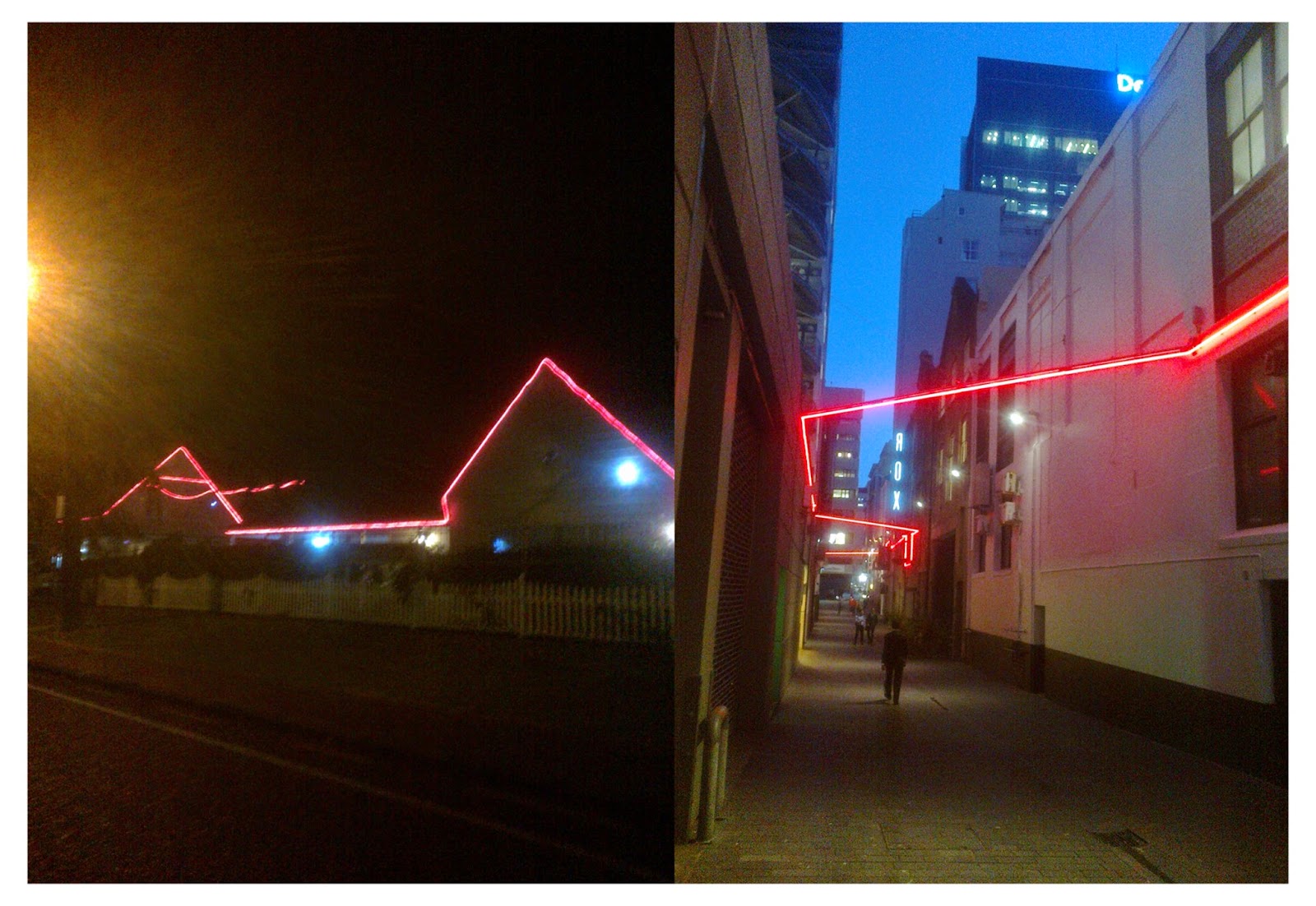Wednesday 2 July 2014
Martin Awa Clarke Langdon

Working at the Auckland Art Gallery Toi o Tāmaki has provided me with many insights into the diverse ways that art is conceived, made, maintained and displayed. This has tuned me into the possibilities for other art experiences outside the Gallery. Here, I want to talk about an idea that came to me by way of proximity and location-based chance encounters.
I digitally juxtaposed the images above to show a link between two sites I see in my travels to and from the Gallery. Parts of this new image may seem both familiar and unfamiliar to CBD goers and Papatoetoe residents alike. The two photographs depict public places that use light to attract and draw your eye along traced lines. For me, these juxtaposed images highlight (excuse the pun) for me, how art is reliant upon perception.
I admire the conviction of the makers of both to change and draw attention to space and architecture. On the left is an image taken in Papatoetoe, where I live and commute from; on the right is an image from Fort Lane in the Auckland’s CBD area, which I walk though to get to work.
The image on the left may appear crude and cheap – whoever created the light feature used LED Christmas lights to outline the architecture of a motel that has a room price of ‘$60 – $200’. But if we look at the lines and forms and think about the low-energy consumption of the materials and personal energy invested in creating the work, it makes for an effective, lasting and sustainable ‘artwork’ or ‘artistic solution’. The installation itself is immaculately presented and the lines are clean and architecturally responsive. Perceiving the artistic merits of this display means looking past the stereotypes of geographical situation and even, perhaps, the creator’s lack of desire to have their handy work seen as a piece of public art.
My ability to see everyday ‘things’ or sites at home through a new lens – one through which I see art where I may not previously have – could be due to the experience of seeing and walking below Eyelight Lane by Swedish artist David Svensson (the image on the right).
Svensson’s artwork seems to offer a new lease of life to the alleyway, which I believe was part of the Council’s intention when commissioning it. Eyelight Lane offers an energy to the alleyway through its responsive navigation of drainpipes, architecture, old signs and what were once small balconies. The work doesn’t re-invent the space by removing its past. Instead, it utilises the built-up history as an assemblage of points that highlight different construction periods and leftover artifacts. I remember this alleyway from my younger days when there were only nightclubs situated there. It used to be a dark and intimidating space that was for the ‘locals’ and associates of the club runners only, and during the day the space became redundant. Svensson’s work reimagines the space and signals a transition in its meaning and usage.
On reflection it can be said that all journeys offer new ways to see and experience what has already been experienced. I am responding to where I’m going but never forgetting the experiences of home. I’m instead inclusively accumulating an understanding of what I know in my negotiation of what I’m discovering.
I enjoy my walk to work through the bustling CBD from Britomart to Auckland Art Gallery Toi o Tāmaki. So much so that it will be part of a public sculpture walk I am hosting for the Gallery during Matariki.
It seems serendipitous that as I have been looking at the public use of light and art the Gallery has just announced an exciting new exhibition – the Light Show comes to Auckland from the Hayward Gallery in London, in time for summer. As the title suggests, the exhibition showcases the use of light in art, and it focuses on the period since the 1960s. The show will explore the experiential and phenomenal aspects of light and is a great chance to see, embody and learn about aspects of light and relate that to our everyday experiences. You may, after seeing the exhibition, see the world ‘in a new light’.